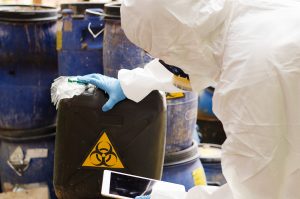Blog by Brian Ward
Officer with Gwinnett County Fire Department in Georgia
When learning new skills and techniques, it’s important to put our hands on the tools we are expected to use. Reading, discussing and drawing on the white board can be great learning tools. But there is much more we need to be doing.
During a recent shift, my firehouse conducted a walk-through of one of our high-rise structures. After looking at all of the nuisances and special items related to this structure, we conducted a scenario.
In theory, the strategy and tactics portion of the initial assignments high-rise incident is clear such as connecting to the standpipe and stretching a hoseline down the hall. However, after conducting this drill, several things needed to be discussed with the company officers. Some of the items found are mentioned below.
The first thing we looked at was simply putting enough of the right equipment on the right floor. This particular scenario had fire showing on the seventh floor with standpipes in each stairwell. The recon team found the fire in the center room of the seventh floor. The first item was humping the hose up to the seventh floor in a timely manner.
This feat is simple enough when drawing it up on a white board. But is your crew physically capable of completing this task? This may prove to be more taxing than anticipated. This is the same crew that must initiate fire attack.
The second item brought to our attention was the standard hose lay, which is 155 feet and 2.5 inches, was just short of the center of the structure from both stairwells. By adding an additional 50 feet to the hose, it was able to reach all the respective rooms. Adding the additional hose corrected the length problem, but the extra equipment has to be carried and deployed.
The third item was actually stretching a hoseline. We now know the length that we need, but how many people will we need and how difficult stretching a hoseline up to the stairwell above, back down and then out into the hall will be? Our standard operating procedures state that a minimum of six personnel must be assigned to this task.
Another item related to this is how the crew will actually store the extra hose in the stairwell until its deployed down the hallway. The extra hose makes it difficult to deploy with occupants evacuating. It can become a tripping hazard for occupants and firefighters.
These are just a few of the items we found that required additional discussion once we put our hands on them. When discussing similar items, we generally leave it to the notion we will just make it happen if the time comes.
Not only is this not practical, its dangerous and should not be a part of our strategy and tactics manual. This scenario happened to be held inside of a high-rise structure; however, it could have been a single-family residential structure.
This proved to be a very good refresher for some of us and a great learning tool for our new firefighters, which is the majority of our crew. Actually using the tools and practicing the skills will make us proficient and keep us safe. We train because we never know when we will run the call, just as we didn’t know that later this same night we would be the first at a high-rise fire.
As always train hard, take care and be safe.
About the Author
Brian Ward is an engineer/acting officer with Gwinnett County Fire Department in Georgia. He is a past training officer, chairman of the Metro Atlanta Training Officers and currently serves on the Honeywell Advisory Council. He is a State of Georgia Advocate for Everyone Goes Home and the Membership Task Force Co-Chair and Live Fire Instructor for ISFSI. Brian was recently awarded the National Seal of Excellence from the NFFF/EGH.


 If you come up on a hazmat incident, you need to know what to do or better yet, you need to know what not to do. What I tell people is to keep things basic and know your limits.
If you come up on a hazmat incident, you need to know what to do or better yet, you need to know what not to do. What I tell people is to keep things basic and know your limits.